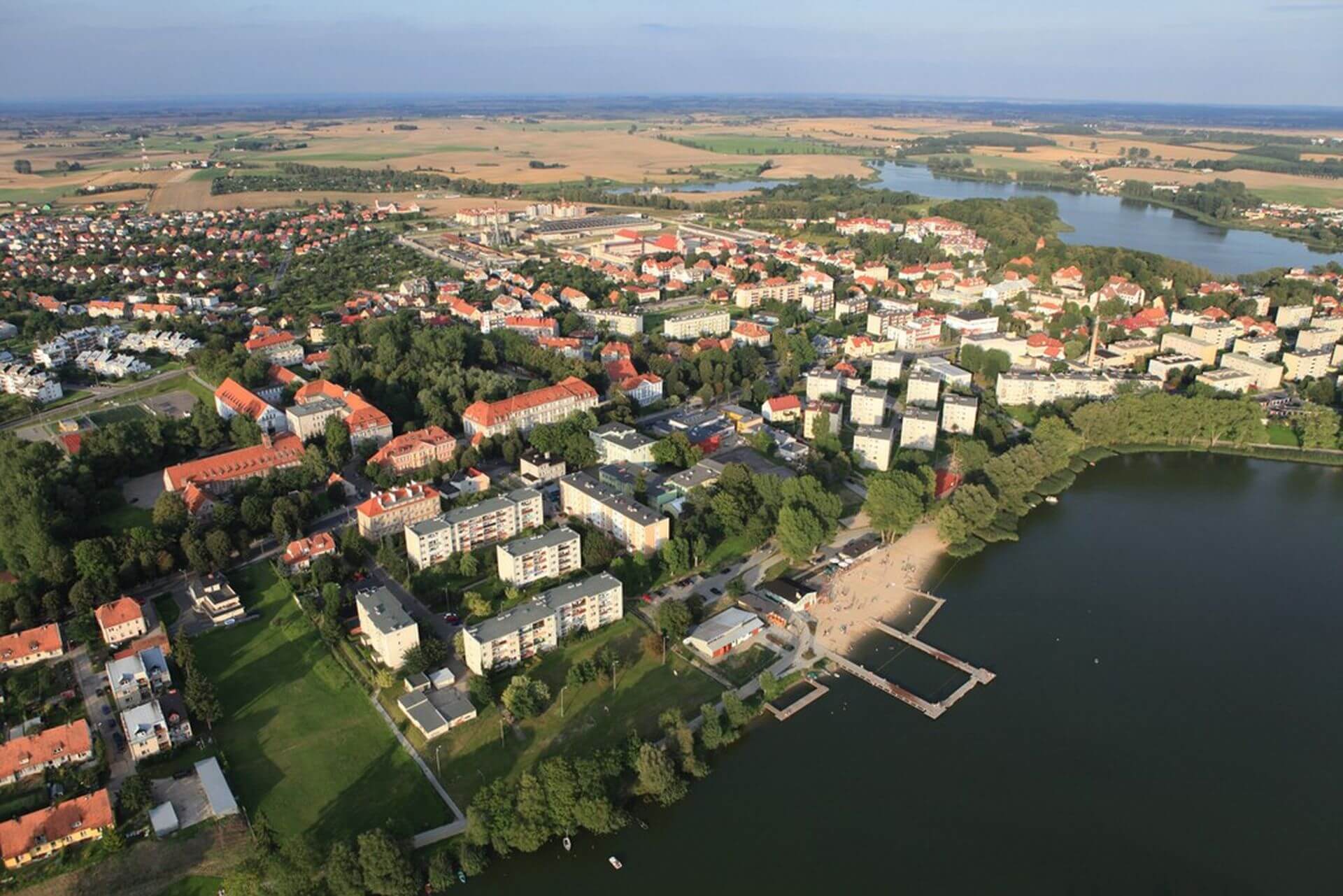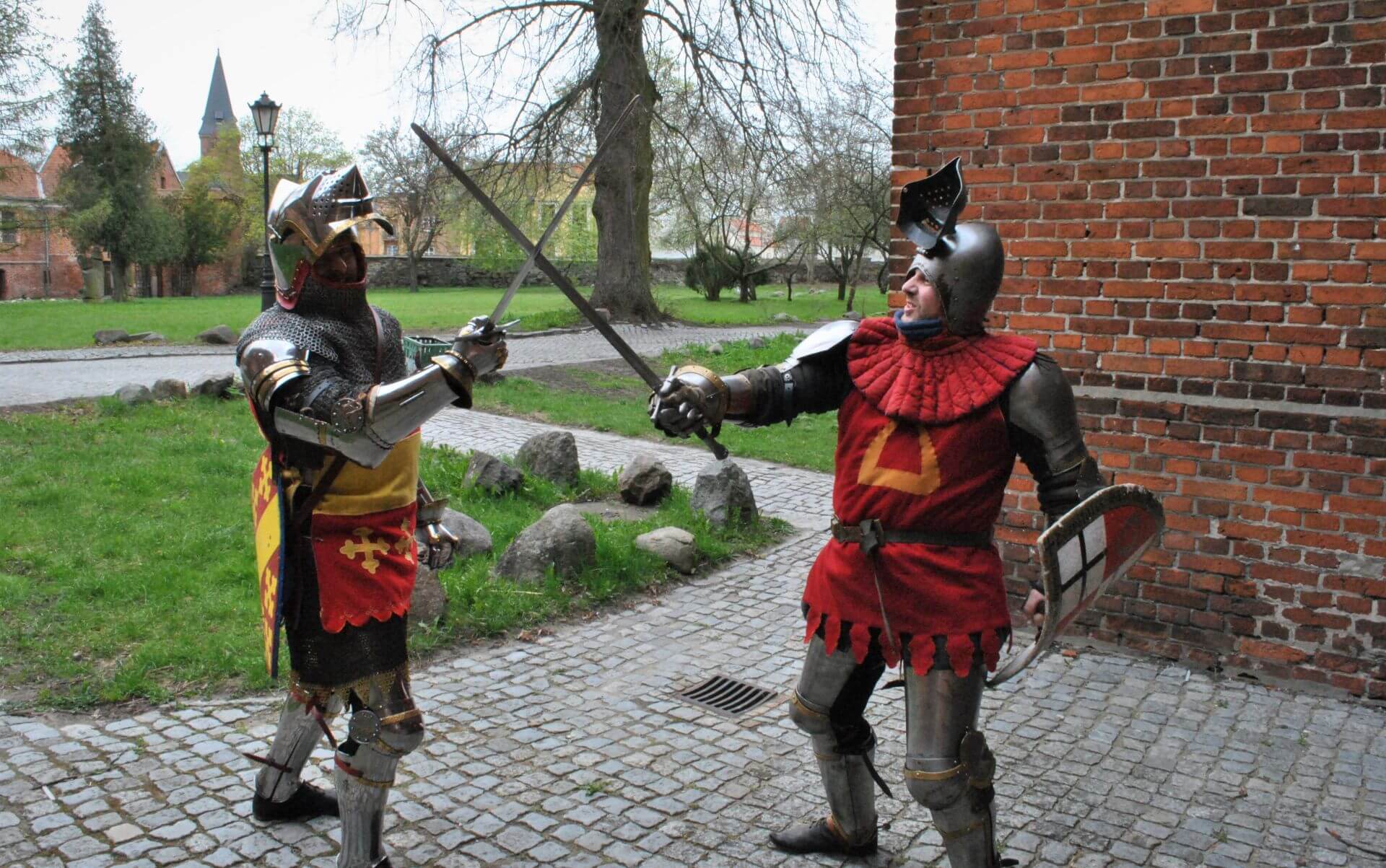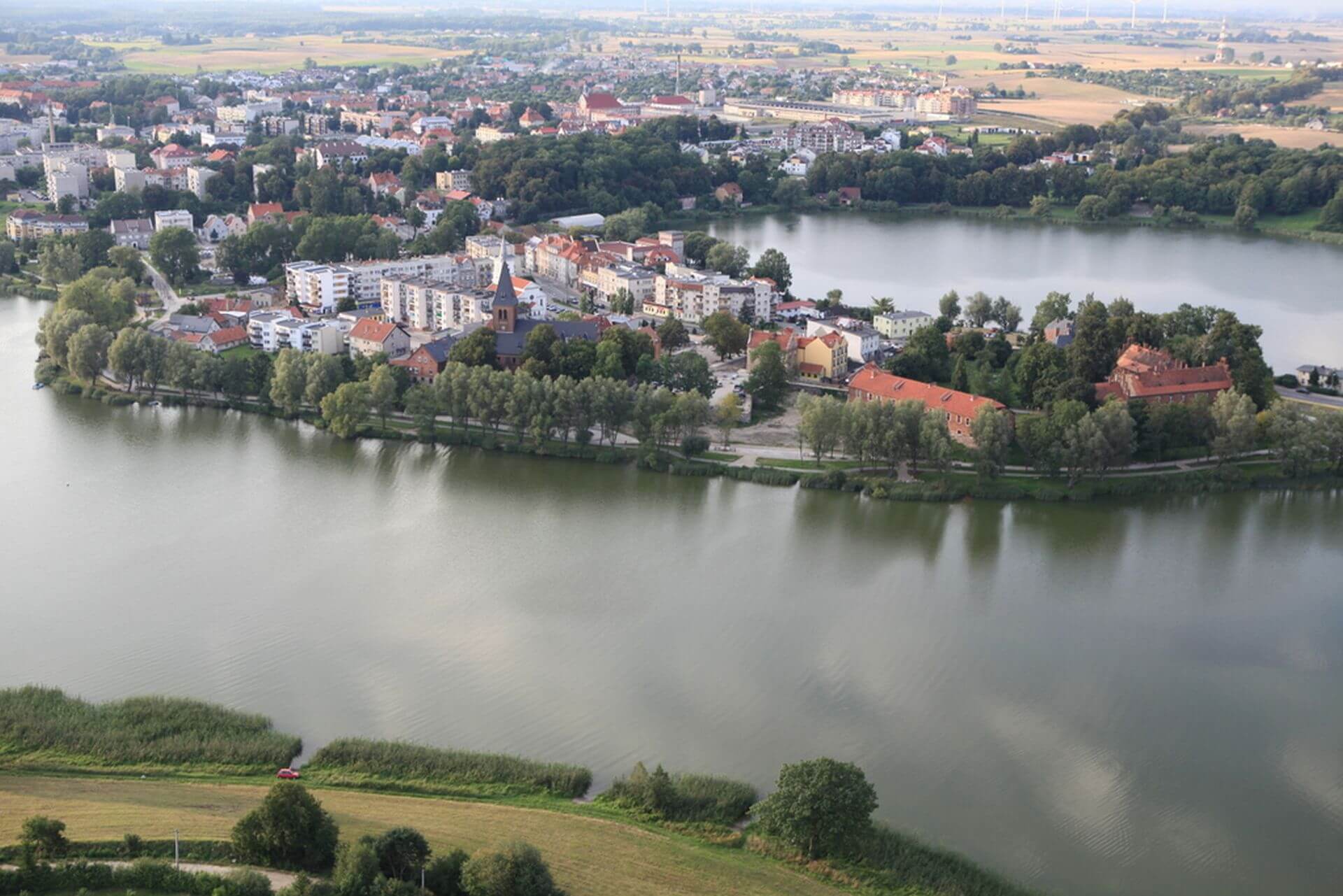Attractions
14th-century castle (on the Castle Hill – knight’s tournaments, fighting shows, outdoors, exhibitions); Parish Church of St. Anna (neo-Gothic interior with elements of Baroque décor); Evangelical church (building with neoclassical forms) from the 19th century. which houses the so-called Small Museum; palaces and manor houses i.a. in Waplewo Wielkie, Zajezierze, Barlewice, Czernin, Małe Ramzy; old town moat with the sculpture of sztumskie horses; castle boulevard; yacht marina in Biała Góra; lock in Biała Góra.
Visiting the castle: The Castle in Sztum Branch of the Castle Museum in Malbork, ul. Galla Anonima 16, 82-400 Sztum, https://www.facebook.com/Zamek-w-Sztumie…
Culture
Sztum Cultural Centre, ul. Reja 13, tel. 55 640 63 45, www.scksztum.pl
Association of Knights of the Sztum Land, Galla Anonima, tel. 724 102 492, 603 407 573, e-mail: BRZS. SZTUM@GMAIL.COM
In the Cinema-Theatre “Powiśle” Sztum Cultural Centre has its headquarters and takes care of the facility. Sztum Cultural Centre is engaged in the preparation and implementation of cultural and educational programmes. An important sphere of activity is educational activities. Year-round classes are conducted i.a. dance, art, theatre, guitar, keyboard, piano, drums and flute. The property provides artistic facilities, thanks to which it is possible to organize music and art cultural events organized here. In the cellars there are art and theatre studios (Black Hall), music and magazines. The first level of the building is occupied by a cinema-theater, exhibition rooms and studios. It has an exhibition/museum character, is located there i.a. a cinema room, a conference room, workshop halls and a corridor for historical, ethnographic and collector’s exhibitions, promoting mainly the history of the Sztum Land and the region, exhibitions of contemporary art, painting, graphics, drawing, sculpture, poster and other forms of fine art. In their organization, the CCS cooperates with museums, cultural centers, scientific institutions, both domestic and foreign. The rooms are also used for conference and banquet purposes (sound system and lighting equipment are available). The second level consists of office and workshop rooms. In the Kino-Teatr building there is also the possibility of introducing combined events (e.g. scientific conference and exhibition, vernissage and concert). Experience in organizing various types of events guarantees the success of any project. Cinema-Theatre “Powiśle” is the only digital cinema in Powiśle. Cinema has a very extensive range of film screenings and fairy tales. The films are broadcast at very short intervals from release.
ACCOMMODATION
Jonatan Inn, Czernin, ul. Sadowa 2, tel. 55 640 20 09 e-mail: zajazd_jonatan@wp.pl, www.zajazd-jonatan.pl
Farm. Agrotourism Jakub Gossa “Stable Spark”, Sztumskie Pole, ul. Łąkowa 19, tel. 55 277 34 01, 504 025 326, e-mail: kontakt@stajniaiskra.pl, http://www.stajniaiskra.pl
Dworek u Leszczyńskich, Gościszewo 33, tel. 55 647 41 03, 697 084 634, e-mail: biuro@leszczynski-bud.pl, rezerwacja@leszczynski-bud.pl, http://www.dworekuleszczynskich.com.pl
Leśniczówka Wydry – Kwatera Myśliwska, Wydry 2, tel. 55 277 21 69
Agrotourism “Nad Białym”, Sztumskie Pole, ul. Żeromskiego 34, tel. 507 077 909, 503 160 340, e-mail: poskor1@wp.pl, http://www.nadbialym.com.pl
Agrotourism Farm Klimbergowice, Sztumska Wieś 60a, tel. 55 640 48 08, 605 550 079, e-mail: klimberg@wp.pl
Agrotourism farm in Postolin, Postolin 23, tel. 55 277 14 68, 696 501 947, e-mail: postolin23@gmail.com, http://www.postolin23.pl
White Manor, Postolin 106, tel. 793 290 92, e-mail: bialy.dworek106@wp.pl; marta.mk1@wp.pl
Agrotourism farm “Palace”, Barlewice 14, tel. 55 277 39 39, e-mail: palac@palac.malbork.pl
Knight’s Guest, Gościszewo 6, tel. 533 988 095, e-mail: arkady.gosciszewo@gmail.com, http://www.malbork-gosciniec-rycerski.pl/
Agrotourism Farm: House in the forest, Sztumskie Pole, ul. Łąkowa 18, e-mail: chrabol@onet.eu
Agrotourism Farm Iwona Maliszewska, Lądziki 17, Sztumskie Pole
Agrotourism farm “Kuliki” Mirosław Barcikowski, Sztumska Wieś 61, tel. 55 267 92 19
Gastronomy
Szwalnia Restaurant & Pub, ul. Lipowa 2, tel. 55 611 02 35
Restaurant Bar Smakosz, ul. Osińskiego 5, tel. 55 277 22 50
DOM Restaurant, ul. Jagiełły 27, Sztum, tel. 509 708 276, e-mail: domrestauracjasztum@gmail.pl
Caffe Figaro, ul. Jagiełły 2, tel. 55 272 07 40
Prezamcze Bar, ul. Jagiełły 8, tel. 55 277 78 31
Jonathan Inn, ul. Sadowa 2, tel. 55 640 20 09, e-mail: zajazd_jonatan@wp.pl, www.zajazd-jonatan.pl
Pizzeria Roma, ul. Galla Anonima 2, tel. 55 277 55 55
Fantasy Pizza Pub, ul. Galla Anonima 1, tel. 55 277 32 22
Fast Food Bar, ul. Mickiewicza 30a, tel. 55 277 32 22
Little Gastronomy, ul. Reja 11
Corona Pub, ul. Reja 13
Brooklyn Bistro, Plac Wolności 21
Po Lodzie Craft Ice Cream Studio, Sztum, ul. Osińskiego 7
EVENTS – Days of the Sztum Land, Solidarity Run 3 May, Sztum Blues Night, National and International Review of Prison Art, International Festival of Street Theatres, International Rally of VW Garbus & CO Lovers, Midsummer night.
information: www.scksztum.pl
City and Municipality Office
ul. Mickiewicza 39, tel. 55 640 63 03
www.sztum.pl





